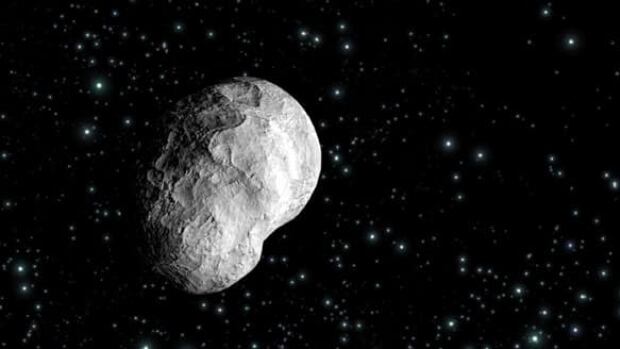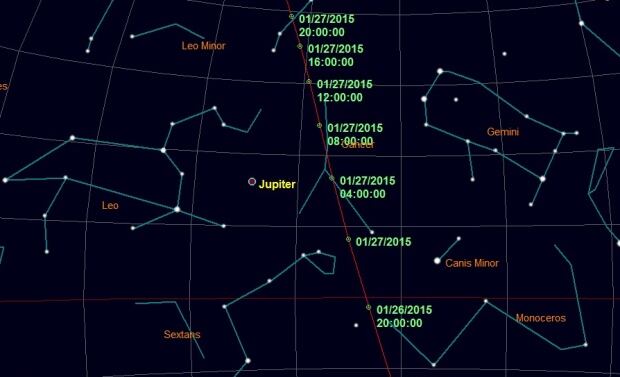Asteroid 2004 BL86 zips safely past Earth
Point your telescope or binoculars near Jupiter tonight

NASA hopes to collect radar images of the asteroid, which
may look similar to this artist's impression. (ESA)
Based on its brightness, asteroid 2004 BL86 was estimated to be about 500 metres across, but NASA scientists later revised their estimate to about 300 metres. They also revealed Monday morning that the space rock is orbited by its own tiny moon.
At its closest approach at 11:19 a.m., the huge space rock was about about 1.2-million kilometres from the Earth, or about three times further away than the moon.
Asteroid orbit0:06
Slooh, a U.S.-based organization that streams celestial events online, provided live images of the asteroid from telescopes in Australia, including expert commentary from astronomers, including Paul Chodas, manager of the NASA Jet Propulsion Laboratory's Near-Earth Object Program Office.
Viewing tips
You may be able to see the asteroid this evening using strong binoculars or a small telescope, NASA says.It will probably be easiest to find around 11 p.m. when it will be to the right of the planet Jupiter, between the constellations Leo and Gemini, high in the eastern sky.
"Jupiter is the brightest star-like object in the sky these days. You can't miss it," said J. Randy Attwood, executive director of the Royal Astronomical Society of Canada. "And the asteroid will be really close to Jupiter."
He recommends finding a dark backyard or park where you can block out as much light as possible. Point your telescope toward the east with Jupiter within view, taking care that the field of view is wide enough for you to see both Jupiter and the asteroid.
Attwood said this is a rare opportunity because it's not often that celestial objects are moving fast enough for us to notice their motion — planets plod along so slowly that their motion against the stars is only visible on the scale of days or weeks.
In this case, the asteroid will move the width of four full moons in an hour, not that quickly.
"You may not see it moving," Attwood said.
He suggests making a diagram of what you see and coming back in a little while to see if anything in your diagram has moved. You may not recognize the asteroid the first time, but it should be obvious the second time.
He says there's great satisfaction that comes with spotting an object like this yourself.
"To think this is something half a kilometre in size, 1.2 million kilometres away and you're seeing it from your backyard — that's exciting."
NASA will also be watching the asteroid, capturing images and data, using its Deep Space Network antenna at Goldstone, Calif. And the Arecibo Observatory in Puerto Rico will also be following the close approach.
"At present, we know almost nothing about the asteroid, so there are bound to be surprises," said Lance Benner, principal investigator for Goldstone Solar System Radar, in a statement.
The asteroid was detected in 2004 and will not come this close to Earth for at least 200 years, NASA says.







No comments:
Post a Comment